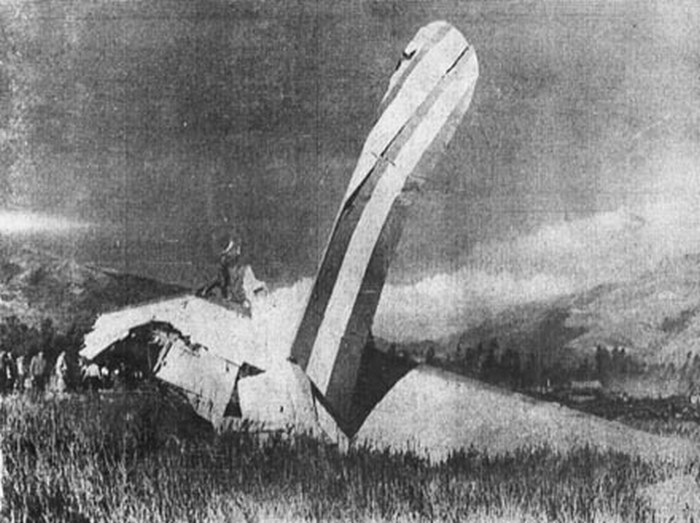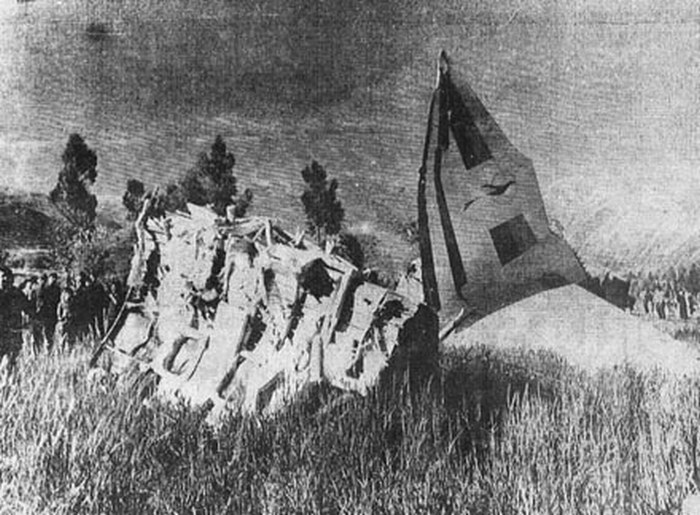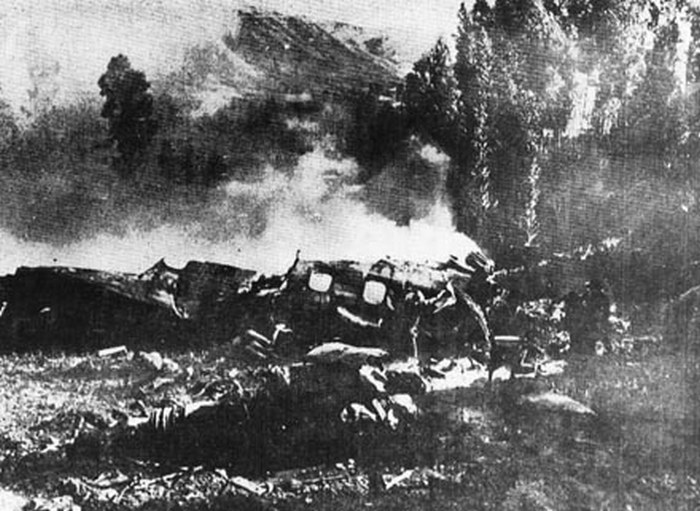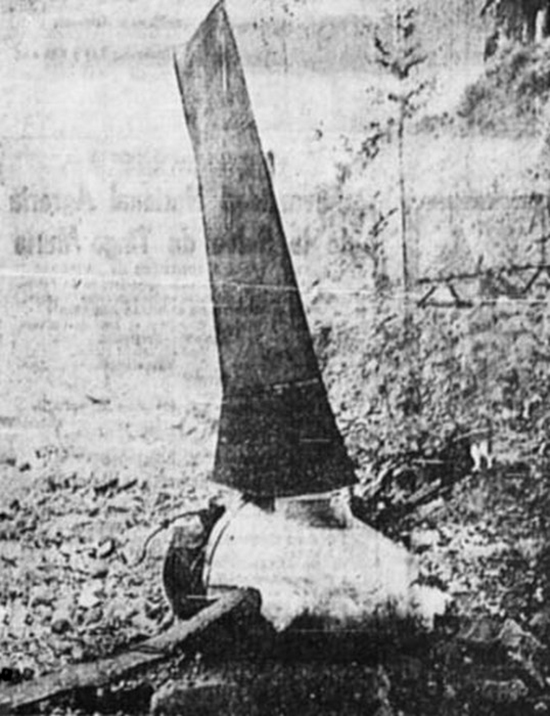Zone
Crash of a Beechcraft E90 King Air in Huaypetue
Date & Time:
Mar 28, 1997 at 0803 LT
Registration:
N90DA
Survivors:
Yes
Schedule:
Cuzco - Huaypetue
MSN:
LW-22
YOM:
1972
Crew on board:
1
Crew fatalities:
Pax on board:
6
Pax fatalities:
Other fatalities:
Total fatalities:
0
Circumstances:
On March 28, 1997, about 0803 eastern standard time, a Beech E-90, N90DA, registered to a private individual, landed short of the runway at Huaypetue Airport, Choque, Peru, while on a foreign air taxi flight. Visual meteorological conditions prevailed at the time and a visual flight rules flight plan was filed. The aircraft received substantial damage and the airline transport-rated pilot and six passengers were not injured. The flight originated from Cuzco, Peru, the same day, about 0700. Civil Aviation Authorities stated that while on approach to land the pilot misjudged the distance from the runway and touched down short of the runway. Postcrash examination of the aircraft showed no evidence of precrash mechanical failure or malfunction.
Crash of a Cessna 404 Titan II in Peru: 4 killed
Date & Time:
May 10, 1996
Registration:
C-FPVB
Survivors:
No
Schedule:
Pucallpa – Cuzco
MSN:
404-0454
YOM:
1979
Crew on board:
1
Crew fatalities:
Pax on board:
3
Pax fatalities:
Other fatalities:
Total fatalities:
4
Circumstances:
Crashed in unknown circumstances while on a flight from Pucallpa to Cuzco. No trace of the aircraft nor the four occupants was ever found. The passengers were Canadian citizens engaged for oil exploration.
Crash of a Beechcraft A90 King Air near Manu: 4 killed
Date & Time:
Oct 11, 1991
Registration:
OB-1305
Survivors:
No
Schedule:
Cuzco - Manu
MSN:
LJ-302
YOM:
1967
Crew on board:
1
Crew fatalities:
Pax on board:
3
Pax fatalities:
Other fatalities:
Total fatalities:
4
Circumstances:
En route from Cuzco to Manu, while cruising at an altitude of 15,000 feet, the pilot was cleared to start the descent when the aircraft struck the slope of a mountain located few dozen km from the destination. All four occupants were killed.
Probable cause:
For unknown reasons, the pilot initiated the approach prematurely, causing the aircraft to descend below the minimum prescribed altitude.
Crash of a Rockwell Grand Commander 690 near Yauyos: 5 killed
Date & Time:
Feb 14, 1979
Registration:
OB-M-1031
Survivors:
No
Schedule:
Cuzco - Lima
MSN:
690-11008
YOM:
1972
Crew on board:
1
Crew fatalities:
Pax on board:
4
Pax fatalities:
Other fatalities:
Total fatalities:
5
Circumstances:
En route from Cuzco to Lima, the twin engine airplane struck the slope of Mt Valla Punta located near Yauyos, about 130 km southeast of Lima. All five occupants were killed.
Crash of a Lockheed L-188 Electra in Cuzco: 101 killed
Date & Time:
Aug 9, 1970 at 1455 LT
Registration:
OB-R-939
Survivors:
Yes
Schedule:
Cuzco - Lima
MSN:
1106
YOM:
1959
Flight number:
LP502
Crew on board:
9
Crew fatalities:
Pax on board:
91
Pax fatalities:
Other fatalities:
Total fatalities:
101
Circumstances:
The airplane was departing Cuzco-Alejandro Velasco Astete Airport on a flight to Lima, carrying a crew of nine and 91 passengers, among them 49 US students who were returning to Lima following a visit of the Machu Picchu ruins. During the takeoff roll, which was 700 meters longer than normal, the engine number three failed. The takeoff procedure was continued as well as the initial climb at a speed of V2 + 15 knots. Once the altitude of 300 feet was reached, the flaps were retracted and at a speed of 140 knots, the aircraft turn left then banked left at an angle of 30-45°. Control was lost and the airplane crashed onto a hill located about 4 km east of the airport. The copilot survived while 99 other occupants and two people on the ground were killed.
Probable cause:
The probable cause of the accident was the improper execution of engine-out procedures by the flight crew, with contributing factors of improper loading of the aircraft and improper maintenance procedures by company personnel.




Crash of a Lockheed L-749A Constellation near Tomas: 49 killed
Date & Time:
Apr 27, 1966 at 0805 LT
Registration:
OB-R-771
Survivors:
No
Schedule:
Lima - Cuzco
MSN:
2521
YOM:
1947
Flight number:
LP501
Crew on board:
6
Crew fatalities:
Pax on board:
43
Pax fatalities:
Other fatalities:
Total fatalities:
49
Captain / Total hours on type:
1692.00
Copilot / Total hours on type:
875
Aircraft flight hours:
47899
Circumstances:
Flight 501 was a scheduled domestic flight from Lima to Cuzco. It was instructed to take-off from runway 15 and to climb in accordance with No. 2 standard climb procedure, described as follows in the airline's route guide: climb on a heading of 190° until 9 NM southwest of the airport, then on a heading of 120°. The flight took off from Lima-Callao-Jorge Chavez International Airport at 0740LT, 10 minutes after the take-off time indicated on the flight plan. At 0757 hours it contacted Lima radio on the route frequency, 126.9 MCIS, and reported: "Departed Lima- Callao at 1240Z, climbing, estimating Ayacucho at 1337Z. It This was the last message from the aircraft, although Lima and Cuzco repeatedly called the aircraft around 0840 hours. One witness from "Tres Cruces" and two witnesses from the village of San Pedro de Pilas testified that their attention was attracted between 0800 and 0805 hours by an aircraft flying unusually low over San Pedro de Pilas or Tamard; one of the witnesses stated that he had been able to read the "LANSA" inscription on the aircraft. They had heard on several occasions aircraft flying over the area, but these were always seen at much higher altitudes. They all concurred that the aircraft was following the gap between San Pedro de Pilas and Tamard and was flying toward the mountain range below the level of the peaks. The two witnesses from San Pedro de Pilas pointed out positions on the Huamantanga peak where they observed the aircraft evading the mountain by a slight turn to .the left and entering the gap towards the east. They did not see any smoke or signs of fire and one indicated that he was positive that all four engines were operating at the time. The wreckage of the aircraft was located on 28 April on the southeast slopes of Mount Talaula at an elevation of 12 600 ft, 61 NM from Lima-Callao Airport and 29 NM north of the normal route. All 49 occupants have been killed.
Probable cause:
The Commission considered that the probable cause of the accident was pilot error in that he:
a) Incorrectly selected the route to be flown in violation of the provisions established by the Airline for operation of flight 501;
b) Incorrectly calculated the climb performance of the aircraft in relation to its total weight of takeoff. This aircraft type, with a gross takeoff weight of 90,572 lb can't within the 25 minutes of flight after takeoff attain the altitude required to fly over the peaks of the Cordillera which are encountered over the distance that can be covered in the above-indicated time along the route followed by the aircraft. Under such conditions the operation can be performed only by flying the aircraft. Under such conditions the operation can be performed only by flying the aircraft at lower levels between the mountains, in violation of the most elementary principles of flight safety;
c) Erroneously estimated the elevation of the nearby peaks he had to clear along the route. The Commission considered that the critical moment of decision came in the area of the towns of Tamara and Pilas which are separated by a gap running into the Cordillera and joining in the same area another wide gap into which flows the Rio Omas and which leads to the coastal town of Asia. At this point the pilot could still have flown out to the east but this would have entailed continuing on this course, then turning to avoid Mount Huamantanga (12 600 feet), since he was flying below the elevation of the mountain so as to enter the gap and follow it up to the Cordillera even though it would have been flying below the elevation of surrounding peaks. The Tamara and Pilas gap, the entrance to which is in the area of the above mentioned villages, at a rather low elevation, is about 5 nm wide along its entire length up to the Cordillera, rises very steeply until it reaches elevations of more than 14 000 feet, which could not be cleared by the subject aircraft, considering its weight, the climb characteristics of the aircraft, the time to fly the 5nm length of the gap and the altitude of the aircraft when it entered the gap;
d) In view of the flight experience of the pilot in command, who had completed 112 flights on the 501-502 route, one can only surmise that his judgment was affected by insufficient rest and his particular state of mind as a result of his assignment to perform the flight for which he was not rostered. He may have been further influenced in the selection of the direct route by the perfect weather conditions obtaining at the time;
e) Finally, although there was no evidence of any mechanical failure the Commission could not definitely rule out the possibility of some 'undetermined' factor during the two minutes if flight from San Pedro de Pilas to the point of impact inside the gap. If such was the case, this would have only aggravated the situation, since it was considered that after having entered the Tamara-Pilas gap, the aircraft could not have been cleared the peaks along the route nor come back. In view of this circumstance, it was considered that an 'undetermined factor did not necessarily cause the accident.
a) Incorrectly selected the route to be flown in violation of the provisions established by the Airline for operation of flight 501;
b) Incorrectly calculated the climb performance of the aircraft in relation to its total weight of takeoff. This aircraft type, with a gross takeoff weight of 90,572 lb can't within the 25 minutes of flight after takeoff attain the altitude required to fly over the peaks of the Cordillera which are encountered over the distance that can be covered in the above-indicated time along the route followed by the aircraft. Under such conditions the operation can be performed only by flying the aircraft. Under such conditions the operation can be performed only by flying the aircraft at lower levels between the mountains, in violation of the most elementary principles of flight safety;
c) Erroneously estimated the elevation of the nearby peaks he had to clear along the route. The Commission considered that the critical moment of decision came in the area of the towns of Tamara and Pilas which are separated by a gap running into the Cordillera and joining in the same area another wide gap into which flows the Rio Omas and which leads to the coastal town of Asia. At this point the pilot could still have flown out to the east but this would have entailed continuing on this course, then turning to avoid Mount Huamantanga (12 600 feet), since he was flying below the elevation of the mountain so as to enter the gap and follow it up to the Cordillera even though it would have been flying below the elevation of surrounding peaks. The Tamara and Pilas gap, the entrance to which is in the area of the above mentioned villages, at a rather low elevation, is about 5 nm wide along its entire length up to the Cordillera, rises very steeply until it reaches elevations of more than 14 000 feet, which could not be cleared by the subject aircraft, considering its weight, the climb characteristics of the aircraft, the time to fly the 5nm length of the gap and the altitude of the aircraft when it entered the gap;
d) In view of the flight experience of the pilot in command, who had completed 112 flights on the 501-502 route, one can only surmise that his judgment was affected by insufficient rest and his particular state of mind as a result of his assignment to perform the flight for which he was not rostered. He may have been further influenced in the selection of the direct route by the perfect weather conditions obtaining at the time;
e) Finally, although there was no evidence of any mechanical failure the Commission could not definitely rule out the possibility of some 'undetermined' factor during the two minutes if flight from San Pedro de Pilas to the point of impact inside the gap. If such was the case, this would have only aggravated the situation, since it was considered that after having entered the Tamara-Pilas gap, the aircraft could not have been cleared the peaks along the route nor come back. In view of this circumstance, it was considered that an 'undetermined factor did not necessarily cause the accident.
Final Report:
Crash of a Douglas C-54A-1-DC Skymaster near Viñac: 21 killed
Date & Time:
Oct 2, 1955
Registration:
OB-PAZ-228
Survivors:
Yes
Schedule:
Lima – Cuzco
MSN:
10277
YOM:
1943
Crew on board:
5
Crew fatalities:
Pax on board:
30
Pax fatalities:
Other fatalities:
Total fatalities:
21
Circumstances:
While in cruising altitude, the captain informed ATC that an engine caught fire and elected to divert to the nearest airport. Few minutes later, the airplane hit the slope of Peak Oiriruma-Viñac located in the region of Viñac. Fourteen people were rescued while 21 others, among them all five crew members, were killed.
Probable cause:
Engine fire in-flight.
Crash of a Douglas C-47 in Cuzco: 22 killed
Date & Time:
Feb 24, 1949 at 0800 LT
Survivors:
Yes
Schedule:
Cuzco – Lima
Crew on board:
4
Crew fatalities:
Pax on board:
22
Pax fatalities:
Other fatalities:
Total fatalities:
22
Circumstances:
Shortly after takeoff, while in initial climb, the crew informed ground that the left engine caught fire and elected to return for an emergency landing. The aircraft stalled and crashed in flames near the airport. Two crew members and twenty passengers were killed while four other occupants were injured. The aircraft was destroyed by impact forces and a post crash fire.
Probable cause:
It appears that the tire on the left main gear burst after takeoff and set fire to the undercarriage compartment and then to the engine and its nacelle after the gear were raised.
Crash of a Junkers JU.52/3mge in Cuzco
Date & Time:
Aug 19, 1941
Registration:
OA-HHC-304
Survivors:
Yes
MSN:
5272
YOM:
1935
Crew on board:
3
Crew fatalities:
Pax on board:
0
Pax fatalities:
Other fatalities:
Total fatalities:
0
Circumstances:
The crew was in charge to transfer the airplane and was supposed to make an intermediate stop at Cuzco Airport for refueling. For unknown reasons, the airplane crashed upon landing and was destroyed by a post crash fire. All three crew members escaped uninjured.






